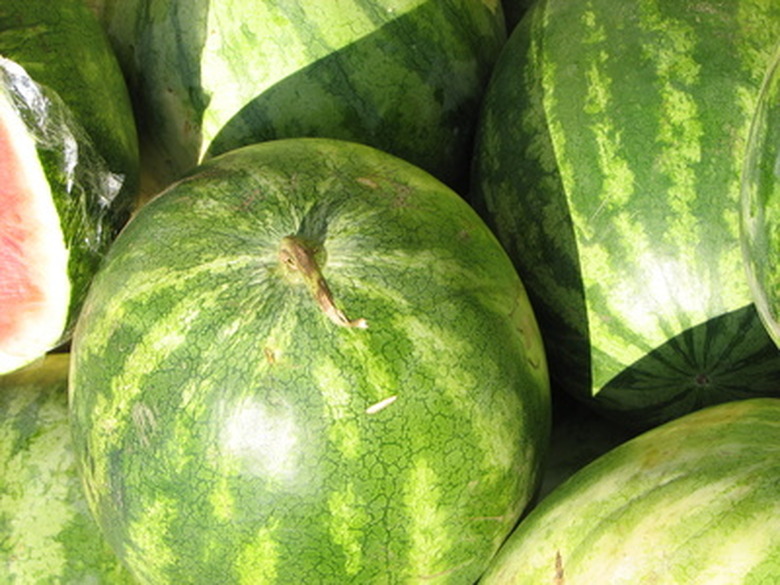How To Garden With A Black Tarp
Things Needed
- Garden soil
- Shovel
- Black plastic tarp
- Garden hose
- Pitch fork
- Utility knife
- Vegetable and fruit seeds
- Watering can
A black tarp can be used in a garden to control weeds and bugs. It can also reduce moisture evaporation and benefit heat-loving plants like melons, peppers and tomatoes. Since black plastic absorbs sunlight and heats the soil, laying it down in early spring can speed the germination rate of seeds needing warm soil to grow. Produce is also cleaner when grown on black plastic. This type of garden accessory can be thrown away at the end of the harvest season.
Step 1
Take the edge of a shovel and outline an area where a specific vegetable or fruit will be grown. Dig all of the dirt out of this area 6 inches down. Pile the dirt 4 inches high at the edge of the outline and taper it downward and out all the way around with a shovel.
- A black tarp can be used in a garden to control weeds and bugs.
Step 2
Make several dirt mounds 4 inches high and 12 inches around throughout the inside area using the topsoil previously removed from the area. Space these mounds according to the seed spacing instructions on the seed packet.
Step 3
Lay a piece of black plastic over the entire area large enough to extend over the four inch outer rise at least 12 inches. Use a garden hose to fill the area with water to push the air out from beneath the plastic and allow the plastic to form to the highs and lows of the soil.
Step 4
Line the outer edge of plastic with a few inches of dirt all the way around the perimeter lip. Poke holes in the plastic with a pitchfork throughout the low troughs between the dirt mounds to allow the water to drain. Wait 24 hours.
- Make several dirt mounds 4 inches high and 12 inches around throughout the inside area using the topsoil previously removed from the area.
- Poke holes in the plastic with a pitchfork throughout the low troughs between the dirt mounds to allow the water to drain.
Step 5
Cut an "X" at the top of each mound within the garden area using a utility knife. Plant seeds in the dirt following the depth planting instructions on the seed packets. Wait for the seeds to germinate. Sprinkle water over the "X" marks everyday to keep the soil moist.
Step 6
Flood irrigate the growing troughs once the plants are 4 inches tall to encourage root growth. Pull any weeds that may come up through the holes in the plastic. Flood irrigate the plastic trough throughout the growing season according to the water needs of the plants being grown.
- Cut an "X" at the top of each mound within the garden area using a utility knife.
- Flood irrigate the growing troughs once the plants are 4 inches tall to encourage root growth.
Tip
A drip system can be constructed beneath the plastic if digging the trough isn't desired.
